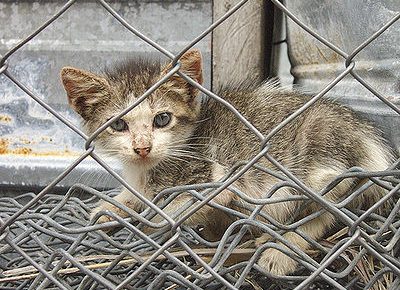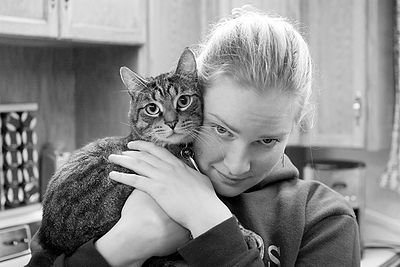Cats play differently with people than dogs do. Cats respond well to calm, easy going playtime. The exuberance of young children, while enjoyed and shared by dogs, is not welcomed by cats.
If a cat is part of your family and you have a child or children, it’s important to teach them how to interact with the cat to avoid being scratched or bitten. Here are some tips to help.
Teach your child how to observe a cat’s body language. For example, rubbing up against a human, tail held straight up, purring, are signs that the cat wants to interact. A quickly swishing tail, fur standing on end, growling, mean stay away.
Cats want to be petted gently, moving with an open hand in the direction their fur grows. Some cats like to be scratched behind their ears. Other cats have sensitive backs and will only tolerate gentle pets on the head and neck area. Cats, unlike dogs, don’t like bellyrubs. Small children can learn to use one or two fingers with you guiding to show them how it’s done. You must learn your cat’s likes and dislikes before teaching your child.
Picking up and holding a cat can be tricky for a small child. At first, have your child sit on the floor and call to the kitty, perhaps using a treat for the cat as an incentive to come. Teach your child to be patient and not to force the cat to do something it doesn’t want to because that can cause injury to the child. If your child is ready to pick up the cat, the proper way is to place one hand under the chest and the other hand at the tail area supporting the legs. Have the child gently hold the cat against his/her body so that the cat feels secure. If the cat indicates it wants to go down, usually by squirming, tell the child to immediately gently release the cat by placing it gently on the floor.
Teach your child not to pull the cat’s tail, ears, fur, legs or poke fingers in eyes, ears, mouth. Remind your child that these actions hurt the cat the same as they would hurt him/her.
Don’t bother the cat when s/he is in the litter box. Besides upsetting the cat, playing in the litter box is dangerous and can cause illness in your child.
Teach children not to leave small objects such as ribbons, yarn, string, rubber bands, clips, small toys where the cat might find them. The cat can become entangled in items or swallow them causing obstructions which need immediate veterinary attention to save the life of the cat.
Sometimes cats just want to be left alone. Often they choose their own special spots in which to hide. Explain to your child that at these times, the cat must be left alone and not disturbed.
Your child should always be supervised when interacting with the cat. Let your child know how much you and the cat appreciate his/her treating the cat well.
This learning experience teaches your child responsibility. S/he will grow into a caring adult who treats all living beings with kindness and respect.



